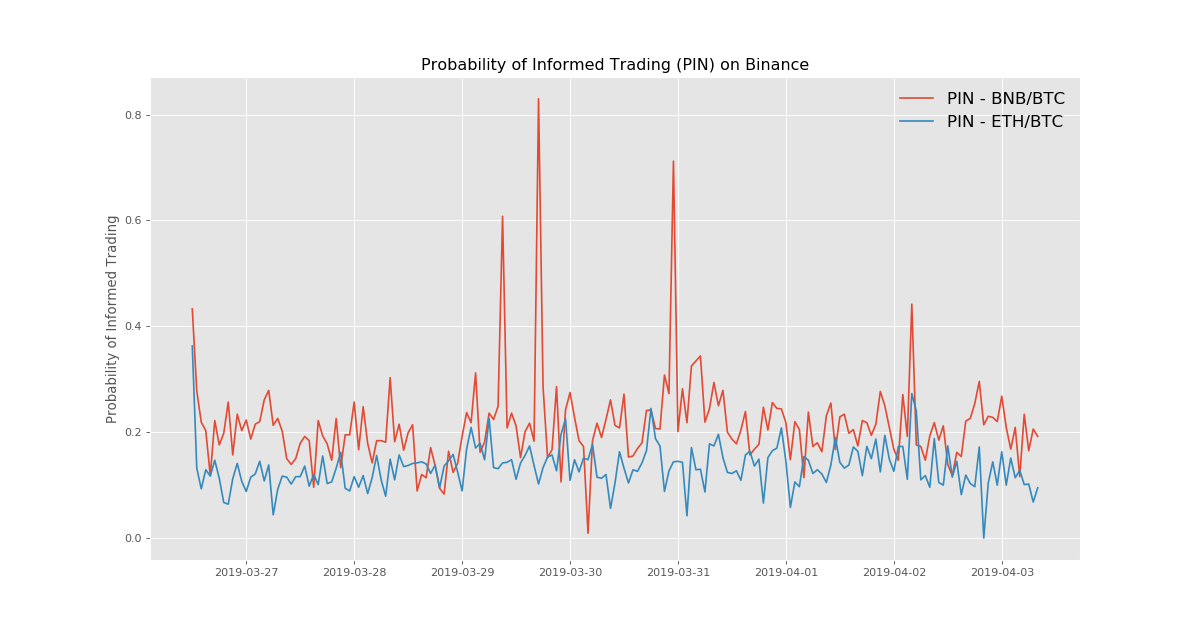Blog
Estimate Merton Distance-to-Default
Merton (1974) Distance to Default (DD) model is useful in forecasting defaults. This post documents a few ways to empirically estimate Merton DD (and default probability) as in Bharath and Shumway (2008 RFS).
Uninitialized Variable in C
Uninitialized variable in C can be anything (most of the time). I find, in some cases, we can know the value of an uninitialized variable and thus maybe exploit it.
Centrifuge Problem
Question
Given a centrifuge with \(n\) holes, can we balance it with \(k\) (\(1\le k \le n\)) identical test tubes?
Adding Another Factor to Principal-Agent Model
In a traditional principal-agent model, firm output is a function of the agent's effort and the principal observes only the output not agent's effort. The principal carefully designs the agent's compensation package, especially the sensitivity of the agent's pay to firm output, to maximize the firm value. Now, what if we add another factor to the relationship between firm output and agent's effort? How would the optimal pay sensitivity change?
Estimate Organization Capital
As in Eisfeldt and Papanikolaou (2013), we obtain firm-year accounting data from the Compustat and compute the stock of organization capital for firms using the perpetual inventory method that recursively calculates the stock of OC by accumulating the deflated value of SG&A expenses.
Download M&A Deals from SDC Platinum
Thomson One Banker SDC Platinum database provides comprehensive M&A transaction data from early 1980s, and is perhaps the most widely used M&A database in the world.
This post documents the steps of downloading M&A deals from the SDC Platinum database. Specifically, I show how to download the complete M&A data where:
- both the acquiror and the target are US firms,
- the acquiror is a public firm or a private firm,
- the target is a public firm, a private firm, or a subsidiary,
- the deal value is at least $1m, and
- the form of the deal is a acquisition, a merger or an acquisition of majority interest.
Specification Curve Analysis
Motivation
More often than not, empirical researchers need to argue that their chosen model specification reigns. If not, they need to run a battery of tests on alternative specifications and report them. The problem is, researchers can fit a few tables each with a few models in the paper at best, and it's extremely hard for readers to know whether the reported results are being cherry-picked.
So, why not run all possible model specifications and find a concise way to report them all?
Bitcoin Address Generator in Obfuscated Python
Never underestimate what programmers can do.
Firm Historical Headquarter State from SEC 10K/Q Filings
Why the need to use SEC filings?
In the Compustat database, a firm's headquarter state (and other identification) is in fact the current record stored in comp.company. This means once a firm relocates (or updates its incorporate state, address, etc.), all historical observations will be updated and not recording historical state information anymore.
To resolve this issue, an effective way is to use the firm's historical SEC filings. You can follow my previous post Textual Analysis on SEC filings to extract the header information, which includes a wide range of meta data. Alternatively, the University of Notre Dame's Software Repository for Accounting and Finance provides an augmented 10-X header dataset.
2023 March Update
In this update I use 1,491,368 8-K filings of U.S. firms from 2004 to Dec 2022 and extract their HQ state and zipcode. hist_state_zipcode_from_8k_2004_2022.csv.zip

